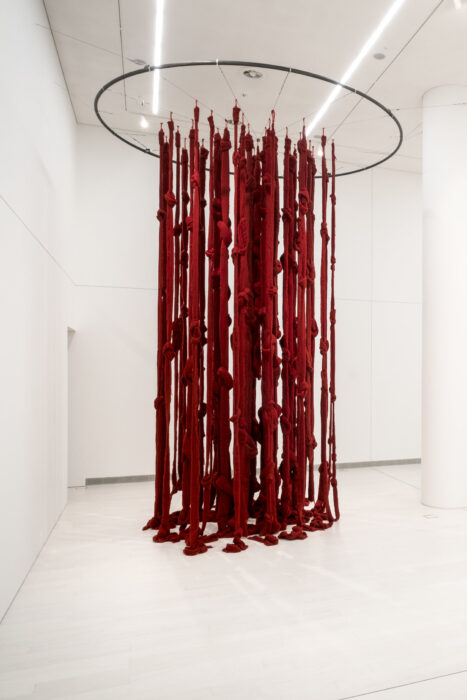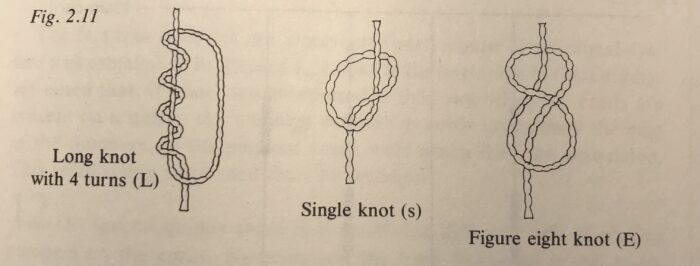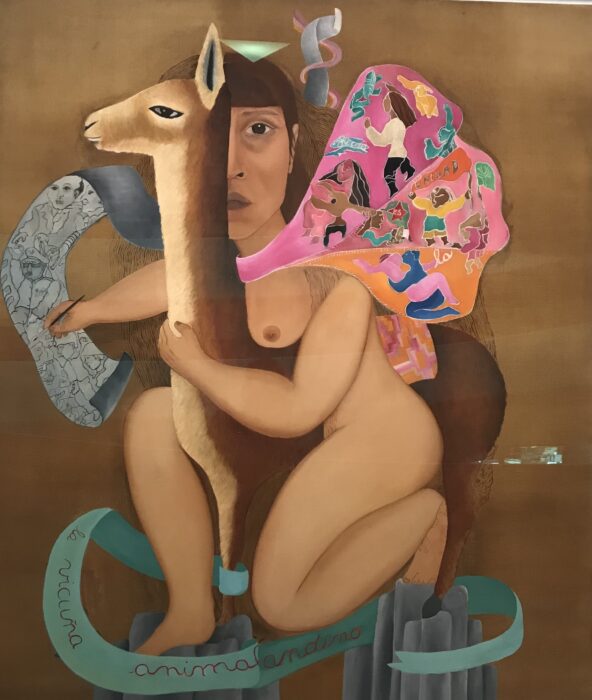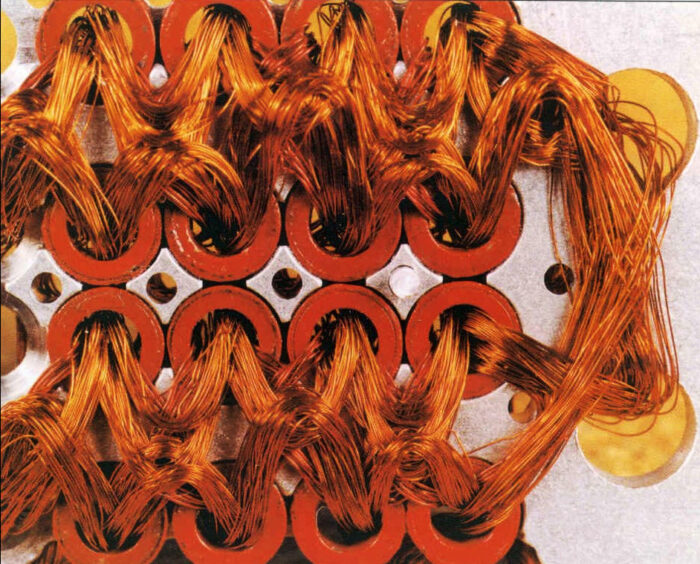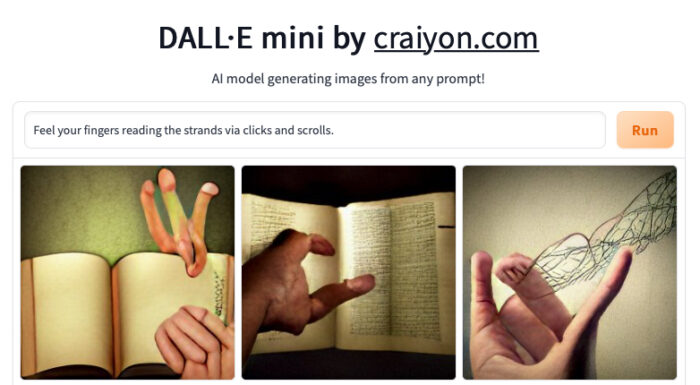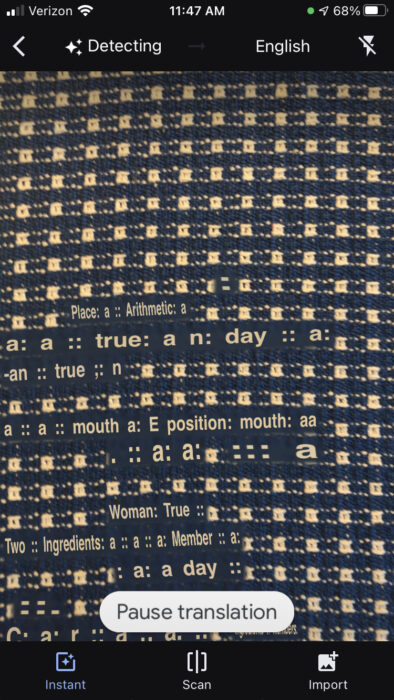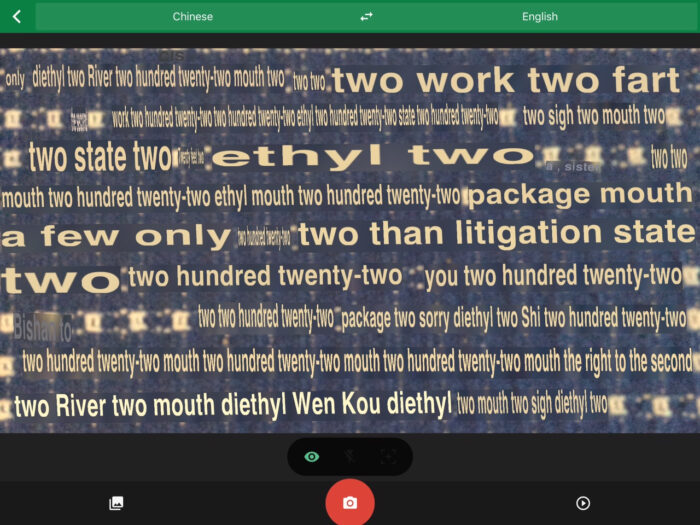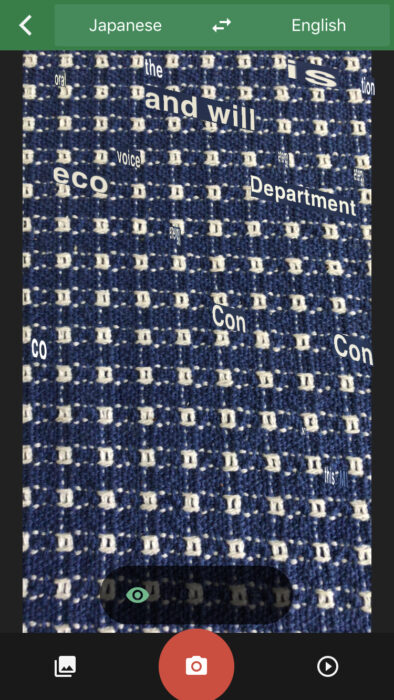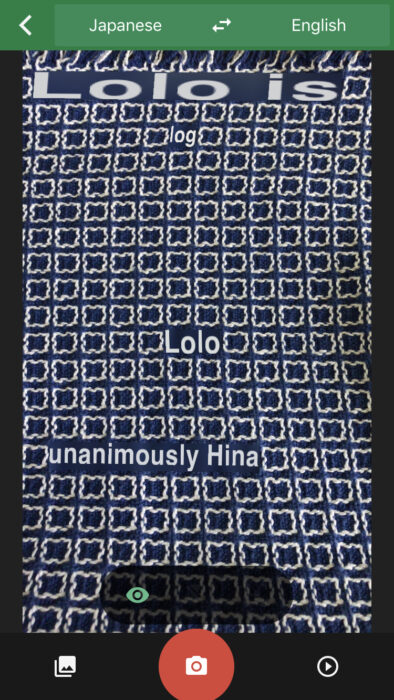I first learned of the quipu [1] from the poet and artist Cecilia Vicuña [2], who describes the ancient textile form as “an alphabet of knots [3], colors, and directions we can no longer read [4].” It is speculated that quipus were used during the Incan Empire for recording things as various as census data, crops, tributes, genealogies, and history. Vicuña has long argued that the quipu is not just a data storage device, but a tactile, three-dimensional form of writing that can be used for poetic purposes. For over 50 years, her work has explored the materiality and semantic potential of the form. Quipus are made of threads [5] wound into cords. Each quipu has a primary cord to which pendant [6] cords – often studded with knots – are attached. The pendant cords can have subsidiary strands, and those can have their own subsidiaries, all in relation, all communicating in code [7]. This paragraph is the primary cord. The footnotes are the pendants, which lead to their analogous subsidiaries and sub-subsidiaries. Feel your fingers reading the strands via clicks and scrolls. Follow your eyes. Pull the thread.
________
[1] Quipus were first used around 600AD during the Wari Empire in the Andean region of what is now Peru. Centuries later, these textile objects were put to broader use by the Inca, whose vast empire is often described as technologically sophisticated yet notably lacking a written language. It is theorized that because the Incan empire covered such an incredibly large and diverse terrain, with a multiethnic, multilingual population of about 12 million, it needed an efficient communication system that transcended alphabetic language; the quipu was at the center of that system. Runners (chasquis) would roll up the hand-knotted threads and relay them to the next location, where they would translate and transfer the quipu to the next runner. In this way, information could travel hundreds of miles in a day.

Fig 1: Incan Quipu, camelid fiber. Playa Miller, Coast of Arica, Chile. Museo Chileno de Arte Precolombino.
While most extant quipus have been shown to record statistical data, up to a third of them are believed to carry narrative information in a code that has yet to be deciphered. The quipu above can be found at the Pre-Columbian Museum in Santiago, Chile. The wall text of the exhibition notes that the largest quipu on display “has 586 cords, organized into eight sections of 10 sets, each with up to 13 sub-levels of information” holding 15,024 items of data. Though it is theorized that this quipu “may contain demographic and tribute data for Inca subjects in Arica,” the specifics are not known. Scholars may understand how the quipu counts, and how to calculate the count – via sight and touch [a] – but they don’t know what it counts.
[2] Notable for her multidisciplinary practice, Cecilia Vicuña is a poet, painter, sculptor, filmmaker, and performer. The trope of the quipu presents itself, no matter which medium she works in. For example, here it is found in her 1990 poem “Gold is Your Spinning”:
The world
is a loose stitch
I’ve lost
the thread
but I rag on
It’s a code
and a count
an account
of the people
Tying it all
Threading
towards it all
Streams & strings
The stars
the river weaves
The woven
woven into one (New and Selected Poems, p. 123)
When Vicuña gives poetry readings, she often weaves the audience loosely together with thread, each spectator a knot on the quipu cord she improvises. In her sculpture, the quipu might be a few strands of thread in a street gutter, or skeins of unspun wool unfurled and draped from a gallery ceiling, or massive red pendant cords placed alongside a Chilean glacier. Her monumental “Quipu Womb [b]: The Story of the Red Thread,” first displayed at Documenta 14 in Athens, Greece, is 26 feet tall.
On her website, Vicuña calls the quipu “a poem in space, a way to remember, involving the body and the cosmos at once.” On the one hand, the quipu is an object one reads with the fingers, “a loose stitch”; on the other it is a universe for the body to navigate.
[3] “Khipu” (also spelled “quipu”) is the Quechua word for “knot.” There are three kinds of knots used on a quipu pendant cord: figure-8 knots, simple overhand knots, and multiple overhand (long) knots.
These knot forms are used to articulate a base 10 positional system; while figure eight knots represent the number 1, and multiple overhand knots represent numbers 2 through 9, their positions on the pendant determine their value by powers of 10 – the closer to the primary cord, the higher the value. For example, the number 452 would be represented on the pendant with an overhand knot of 4 twists at the top, followed by a knot with 5 twists, and then a knot with two twists. Placement, recombination, and spatial relation are keys to the arithmetical system. For Cecilia Vicuña these knots represent much more than utilitarian statistics. In a conversation at the Brooklyn Museum in 2018, Vicuña declared that “the knot is the great metaphor of the world, the most complex mathematical object that exists because it involves thousands of dimensions.” [c]
[4] Vicuña’s phrase “the alphabet we can no longer read” is from her 1997 work “Palabra e Hilo” / “Word and Thread,” a lyric essay that meditates on the interconnections of writing and weaving. Vicuña is interested in the quipu’s inscrutability, as it gives her work permission to connect the erased and buried past with the present moment, as well as with possible futures. Her fascination with the enigma of the quipu began early in life; as a teenager in the 1960s, she wrote in a notebook “the quipu that remembers nothing….” In the heyday of the Incan Empire, the quipu keepers, the khipukamayuq, were responsible for interpreting and maintaining the tactile language. When the Spanish arrived there was, for a moment, a co-existence of the languages of the colonizer and the colonized; Spanish accounts remark on quipus recording narrative material such as myths, songs, and poems. But in 1583, thanks to the conversion fever of the Spanish Inquisition and a paranoia about the alternative histories the quipus might tell, the Catholic church called for all quipus to be destroyed. The language system all but vanished. Julia Bryan-Wilson writes that Vicuña’s early note on the voiceless, and thus erased, quipu “suggests that indigenous knowledge systems might be fragile threads that have been severed by colonial regimes and cannot easily remember their own histories” (111). Centuries later, scholars are still trying to piece the language back together, using quipus found at burial sites that predated the “book burning” of the colonizers, as well as post-conquest Spanish accounts that seem to interpret quipu content. While the arithmetical system of statistical quipus has been decrypted, the narrative quipus remain a mystery. [d] Anthropologist Sabine Hyland writes that “Discovering a narrative khipu that can be deciphered remains one of the holy grails of South American anthropology” (“Unraveling an Ancient Code”). For now, the material remains of the quipu language can be read only via the senses: by sliding the strands between the fingers, by feeling the number of twists, by noticing the color, the fiber, the ply. Silvia Ferrara has described the quipu as a “corporeal system, an extension of their [the Incans’] fingers.” Or, as Vicuña writes, “Thread feels the hand, as word the tongue.”
[5] Touch is as important as sight when “reading” quipus. Most quipu threads were made from cotton grown in the Andean lowlands, but a variety of animal/camelid fibers from the mountains were used as well. Each type of fiber has a different feel to the fingers, and those distinctions may have semantic significance. One type of camelid fiber used was from the vicuña, a wild ancestor of the domestic alpaca that lived high up in the Andes mountains. Its wool is extremely soft, strong, and precious; during Incan times, vicuña coats were shorn and made into clothing worn solely by royalty. The Spanish conquest introduced a long era of hunting and killing the animals, which led to them becoming an endangered species. [e]
This painting was exhibited in Cecilia Vicuña’s 2022 Guggenheim exhibition. The wall label she wrote to accompany the piece states
La vicuña was half and half, all and nothing at all, person, painter, animal, poet. She painted herself brush in hand, painting herself. But the painting was not a self-portrait but a portrait of what she saw: the two halves of the question: are we going to let the dictators rule and kill us? Or can we unite and fight for our lives?
[6] The pendant cords of the quipu may hang down on a wall, or they may be arranged on a table like a constellation radiating out from the center. These strings represent something we can’t see or comprehend; they are conceptual metaphors. All we can know for certain is that the meaning of the cords is based on their patterned relation. In her film Kon Kon, Cecilia Vicuña connects the quipu to its “virtual counterpart,” the ceque system. Ceque are 41 imaginary lines that, according to the Inca, radiate out from the Temple of the Sun in the center of Cusco (the capital of the Incan Empire). Before they were erased by colonization, over three hundred sacred shrines studded those lines, functioning as knots on a massive geographical quipu. Ceque lines also mapped a geometry of multi-dimensional interconnectivity; Vicuña describes the ceque system as a spiritual technology that connects the body to the cosmos, [f] as the pathways to sacred sites on the ground are mirrored above by the lines that connect the stars into constellations in the sky. While following the ceque path, one senses the body from above as well as on the ground. The body moving becomes an act of reading the earth.
[7] All the information communicated by a quipu is encoded: the color, the way a knot is tied, the torsion and texture of the cords, the direction a cord is twisted. These various attributes have been recorded and aggregated into typologies by scholars, in the hopes that the patterns will eventually reveal meaning. Using statistical aggregation, quipu scholar Manuel Medrano has approached a compilation of 16th century Spanish transcriptions of khipus (the Textos Andinos) as if it were a potential Rosetta stone. This approach suggests the possibility of language-to-language equivalence (though Medrano emphasizes that statistical methods are meant to supplement, not replace, close reading techniques).
For Vicuña, the open mystery of the quipu language provides a space for opportunity; through exploring and expanding upon quipu materiality, her works “speak” to the past while addressing pressing contemporary concerns such as environmental collapse. In her essay “Introduction to Mestizo Poetics,” Vicuña notes the power of semantic flux: “Flexibility of meaning is important for an oral culture where meaning is not fixed, but is an ongoing phenomenon, renewed and transformed at each reading.” Later she writes “The quipu…embraces its own dissolution, the possibility of being reknotted, rewritten many times over. This vision of impermanence is what attracted artists to its aesthetics.” Her own artistic practice highlights the communication context of the quipu as a combination of math, metaphor, oral history, and the body.
While Vicuña finds the quipu’s indeterminate qualities to best serve the needs of poetic logic to imagine otherwise, contemporary quipu scholars like Medrano, Jon Clindaniel, and others are using corpus-based statistical data sorting techniques with the goal of systematic decipherment of quipu patterns. Algorithms related to those used for machine translation are being used to scan this limited corpus. [g] Can they crack the code? Can a tactile language lost to the violence of colonization, be brought back to life via machine learning? What kind of life will it be?
*
[a] Fast forward through history to a room full of server farms, data being sifted on a giant loom, the human hand and eye no longer in the picture. The body is now just part of the data set, part of a giant tapestry made for machine eyes [i], interpreted by systems of power and capital.
[b] In her book Health Care and Big Data, Mary Ebeling recounts going to the doctor for fertility treatments. Her body’s data was entered into multiple databases: first at the doctor’s office in a large university health system, then at a pharmacy (which is part of a national corporate conglomerate). She performed multiple searches on the internet to learn more about treatment, side effects, etc. Her digital footprints were parsed and sorted into hundreds of disembodied datapoints, which were then assembled according to proprietary algorithms into a narrative (a “data body”) which was then subject to predictive modeling and sold to numerous interested parties. Ebeling’s private health journey thus led to a proliferation of offers and opportunities to buy any number of products, and to participate in various studies. Ultimately the treatments failed; however, this outcome was not transmitted to her data body. So even though her actual body did not need any number of products, they continued to be offered to her – for example, coupons for breast milk substitutes that she would never need. After much research and conjuring, she began to understand that her data body [ii] had a birth and life of its own, separate from hers. (see Ebeling)
[c] In 2014, the tech entrepreneurs Craig Venter and Peter Diamandis started a company called Human Longevity, Inc. The aim of the company is to extend the human lifespan with the help of a million-genome database. For each of its clients, the company creates an “integrated health record” based on the information gathered into a “Health Nucleus.” That nucleus contains the results from diagnostics such as full body MRI, whole genome sequencing, echocardiogram, electrocardiogram, wireless heart rhythm monitoring, comprehensive labs, insulin sensitivity testing, DEXA scan, balance tracker, gut microbiome test, a multi-targeted stool DNA test, and a coronary calcium score. Machine learning algorithms locate patterns in the data that might predict (and proactively prevent) disease and “aid in maximizing your performance.” As of 2020, Human Longevity had 5000 clients. Costs for initial testing ranges from $7,500 to $19,000 for the platinum plan. Thousands of dollars make thousands of disembodied datapoints. In a blog post titled “Datamining Your Body,” Diamandis writes “Translating between all of this data and your health outcome is, metaphorically, similar to how Google Translate works.”[iii] In fact, Franz Och, “the man responsible for building Google Translate” is Human Longevity’s Chief Data Scientist. (see Borfitz, Diamandis)
[d] What’s mysterious is what happens to the body’s data once it has been extracted. For example, Hugo Campos, who has a genetic cardiovascular disease, lives with a cardiac defibrillator implant that will shock his heart when it’s disregulated. [iv] The implant constantly collects data on his heart rhythms, fluid buildup, the mechanics of the device. Campos wants access to this data so he can track what might trigger his bouts of arrhythmia, but providing information to the patient is not considered part of the implant manufacturer’s business model. The device maker turns over some of the data to Campos’s doctor, but the rest is in a proprietary black box. The heart is a surveilled quipu that remembers nothing. In his quest for access to the data produced by his own body, Campos has become known as a data liberation activist. He has also joined the All of Us precision medicine program, an NIH-funded database that aims to input health data of a million people, with particular emphasis on underrepresented populations that aren’t often considered in health care research. Similar to Human Longevity, it requires input of your genetics, biology, and behaviors, but rather than the promise of longer life for the elite, the goal is customizable health care for all. What will happen to that data of All of Us after the 10 year pilot project is completed? Will it remain in the hands of the participants, or will it vanish, stowed behind proprietary walls, a code to be found in the future? (see O’Shea)
[e] In 2018, two neighbors – a conservationist (Serge Wich) and an astrophysicist (Dr. Steve Longmore) – discussed the problem of monitoring and collecting data on endangered species over their garden fence. Typically, species are counted via empirical evidence (sightings and signs of presence), and thus the count feels closer to an educated guess than to fact. Conservation policy requires facts, so how to get them? Wich had mounted an infrared camera onto a drone to get more accurate counts. He was able to locate animals using this method but couldn’t determine which animal the camera was picking up on. Longmore mentioned that his colleague, Dr. Claire Burke, had come up with a way to identify the size and age of stars through their heat signatures. Thus it came to be that the software used to identify galaxies was applied to the identification of the heat patterns of endangered animals. Burke notes that “When we look at animals in the thermal infrared, we’re looking at their body [v] heat and they glow in the footage. That glow is very similar to the way that stars and galaxies in space glow.” (see Ghosh)
[f] In the early 1960s, women weavers sat at long desks threading copper wires through and around eyelet holes (magnetized cores) for the Raytheon Corporation. They were referred to as “space age needleworkers” and they were weaving “core rope memory” for guidance computers on the Apollo moon missions. Sometimes engineers referred to their work as the LOL (Little Old Lady) process.
There are no first-person accounts from the women who did the work that enabled men to navigate space. They were the embodied laborers weaving the sense line in a pattern encoded with 1s and 0s; thinking about them is like thinking about the person who made your cell phone. We’re not meant to see those LOL [vi] bodies and their labor. (see Rosner)
[g] Algorithms are being used to scan, sort, and identify giant databases of faces; a 2016 study states that 50% of Americans are already in a law enforcement facial recognition network. The errors in facial recognition procedures, particularly when it comes to “reading” the faces of people of color, have been well documented. Despite that knowledge, IBM, Amazon, and Microsoft didn’t stop selling the flawed technology to police departments until 2020, in response to Black Lives Matter activism. Nonetheless, the desire for an image to translate neatly to a name via algorithm persists. Algorithmic nirvana is a world where this equals that. But what if more attention were paid to the glitch-potential of the machine consciousness? What if the desire for certainty and neat equations was replaced by attention to machine “creativity”?
An example of such a paradigm shift [vii] can perhaps be found in recent text-to-image AI generators like Nightcafe, DALL-E, and Mid-Journey. The same kinds of translational algorithms as those used for facial recognition are being used here, but the AI can highlight the indeterminacy inherent in the process. Of course, these image generators (as well as companion text generators like ChatGPT) are aiming for a glitchless future, where it will be impossible to tell whether an image or text has been created by a human or an algorithm. And like all of the algorithms that sort and parse our body’s data, they live in a proprietary Pandora’s box. But for now, before it’s fully grown, we can appreciate those awkward moments of its adolescence, when the imperfections of machine intelligence are still visible. (see Garvie, et. al., Growther, et. al., Burton Harris and Mayor)
*
[i] While trying to translate the packaging of a snack sent to me from Japan, I point my phone camera at the snack and a translation app trawls through hundreds of millions of documents until it identifies a pattern and finds a match for the text. I learn the ingredients. The algorithm picks up on another pattern as well: the weave of my tablecloth in the background. There, lodged in the blue and white, is a rigid cutting river.
The translation of the textile is caused by a glitch, but there’s a name of a Japanese filmmaker who died the year I were born as well as some “bones,” “your eyes,” “ha ha.” What is the tablecloth trying to say? I can’t crack the code, so I turn around and go back to the primary cord, to follow another pendant.
[ii] I am convinced that Google Translate is channeling a textile consciousness. Who is she? I point my camera at my tablecloth again and take another screenshot.
It occurs to me that sometimes a woman’s body is just math, possibly a thousand dimensions. Truly, a body can be just a list of ingredients. A tablecloth can be a blue sky, the white threads a grid of stars. The high-dimensional data cluster is breaking my brain, so I head back to the primary cord.
[iii] I want to get to the bottom of what’s going on with this translation algorithm. Though I struggled in high school French class, I am fairly confident that translation requires knowing the rules of the language. Apparently, I am wrong.
Early in the 20th century, mathematicians and cryptoanalysts introduced the idea that language was not so much a rules-based linguistic system as a code to be decoded. If you know the code, translation can occur without knowing the original language at all. Google Translate is a codebreaker. In 2010, developer Otavio Good created the augmented reality app WordLens, which was subsequently acquired by Google and became part of Google Translate. It was built to help travelers translate signs and menus by pointing a camera lens at the words.
In her 1979 essay “Grids,” Rosalind Krauss proclaimed of the grid: “The barrier it has lowered between the arts of vision and those of language has been almost totally successful in walling the visual arts into a realm of exclusive visuality and defending them against the intrusion of speech.” An app like WordLens disproves the point, as it completely locks word to image through the grid form. John Cayley conjectures that WordLens “tries to ‘read’ what, to our non-augmented eyes, is purely formal grid, finding language-symbolic ‘differences’ where we do not. Moreover, the differences that WordLens sees are tiny, affected by slight movements or changes of focus and light. These cause WordLens to revise its reading continually – even when set to interpret from a single language – and, effectively, to produce an animated sequence of textual events as it reads and rereads the grid…” Thus, the tablecloth generates an infinite text.
I see a mouth, there’s a multi-targeted DNA stool sample, a hydrocarbon radical two hundred and twenty-two of you. The diethyl river smells like a fart. That’s in the ether class, unreadable, so I re-start the engine and click back to the primary cord.
[iv] Now I see Con con / Concón / Kon Kon, the beach in central Chile where Cecilia Vicuña states that her art was born. “Here I am writing you and loving you, my Con con,” she types in Spanish in her 2010 film Kon Kon. Among other things, the film calls out industrialized fishing and the environmental deregulation and privatization of the area’s natural resources that are quickly erasing traditions of the past and making life in the present and future more precarious.
A confidence trick? Thinking about the ancient traditions, Vicuña says in a conversation “Where is this Con con? This culture has been made invisible by the machine of greed that is eating up the entire planet at this moment.” In Chile, while the law states that water is a public good, water has been privatized since 1973. Currently experiencing its worst drought in 60 years, Chile recently created a Department of Water responsible for enforcing a new Water Code. Eco echo. Depart department. The prefix “con” is supposed to mean “with,” a connection with others. Con-stantly revising its reading, a code to be found in the future, the thread of the primary cord.
[v] This subject trapped in the constellation of the procedure … is her name Lili? Lia?
The procedure moves me away from my ha(bits), my preferences, my intentions, my desire for scholarly rigor, and brings me to this new true bit of a day. True:::::bit:::::a:day. I step away from my own operating system to discover a textile mind, a data-body, struggling to free itself from the corpse of the corpus. I go back to the primary cord.
[vi]
Even though my tablecloth was made in Lancaster, Pennsylvania, due to certain communications I decide the spirit in the tablecloth is Hina, a Hawaiian moon goddess. Research reveals that through a lunar program she traveled on a rainbow towards the sun, then to the moon, where she makes Kapa cloth out of the bark of Banyan trees. Martha Beckwith, in her book Hawaiian Mythology, writes that Hina-Hanaia-I-Ka-Malama means “the woman who worked in the moon.” The Hawaiian Dictionary translates “hina” to mean “to fall, tumble, or topple over from an upright position; to be ‘controlled,’ as a disease; to fall morally; to throw down; a falling; … a goddess.” Low, low. I fall back to the primary cord.
[vii] Can you feel your fingers pushing the scroll wheel, tracing on the track pad, clicking on numbers, moving the text up and down the tablet? Do you sense your eyes shifting back and forth as they take in word and image? Are you processing the data, waiting for it to click into place in a seamless flow? Are you following the thread as it’s been laid out for you? Or can you pull the thread and do something else with it?
________
Sources
Mark Adams, “Questioning the Inca Paradox,” Slate, 7/12/11, https://slate.com/human-interest/2011/07/inca-paradox-maybe-the-pre-columbian-civilization-did-have-writing.html
Candice Amich, “From Precarity to Planetarity: Cecilia Vicuna’s Kon Kon,” The Global South, 7:2 Fall 2013 pp. 134-152.
Martha Beckwith, Hawaiian Mythology, University of Hawaii Press, 1982.
Deborah Borfitz, “Human Longevity Inc. Changing Healthcare ‘One Patient At a Time,” DiagnosticsWorld, 3/6/20 https://www.diagnosticsworldnews.com/news/2020/03/06/human-longevity-inc.-changing-healthcare-one-patient-at-a-time
Julia Bryan-Wilson, Fray: Art and Textile Politics, University of Chicago Press, 2017.
Victoria Burton-Harris and Philip Mayor, “Wrongfully Arrested Because Face Recognition Can’t Tell Black People Apart,” 6/24/20 https://www.aclu.org/news/privacy-technology/wrongfully-arrested-because-face-recognition-cant-tell-black-people-apart
John Cayley, “Reconfiguration: Symbolic Image and Language Art.” Humanities 2017, 6, 8. https://doi.org/10.3390/h6010008
Jon Clindaniel, “Toward a Grammar of the Inka Khipu: Investigating the Production of Non-numerical Signs.” PhD diss., Harvard University, 2019.
Peter Diamandis, “Data Mining Your Body,” 6/18/15, https://www.diamandis.com/blog/data-mining-your-body
Quinn DuPont, “The Cryptological Origins of Machine Translation: from al-Kindi to Weaver” Amodern 8, January 2018, https://amodern.net/article/cryptological-origins-machine-translation/
Mary Ebeling, Health Care and Big Data, Palgrave-MacMillan, 2016.
Silvia Ferrara, “How the Inca Used Knots to Tell Stories,” Lithub, 3/8/22, https://lithub.com/how-the-inca-used-knots-to-tell-stories/
Clare Garvie, Alvaro Bedoya, Jonathan Frankle, The Perpetual Lineup: Unregulated Police Face Recognition in America, Gerogetown Law, Center on Privacy and Technology, October 18, 2016, https://www.perpetuallineup.org
Pallab Ghosh, “Conservationists use astronomy software to save species,” 4/3/18, BBC News, https://www.bbc.com/news/science-environment-43546429
Ryan O’Shea, Future Grind podcast 8/26/20, Ep. 53, “Autonomy and Data Liberation with Hugo Campos” https://www.youtube.com/watch?v=a7Mt997TUY4
Patrick Grother, Mei Ngan, and Kayee Hanaoka, “Face Recognition Ventor Test (FRVT) Part 3: Demographic Effects,” National Institute of Standards and Technology, U.S. Department of Commerce, December 2019, https://doi.org/10.6028/NIST.IR.8280
Sabine Hyland, “History of Khipus and Empires Undeciphered,” Google Arts & Culture, https://artsandculture.google.com/story/RAXhNJOYeqMCyQ?hl=en
–. “Unraveling an Ancient Code Written in Strings,” 2017.
https://www.sapiens.org/language/khipu-andean-writing/
The Khipu Keepers, Google Arts & Culture: https://artsandculture.google.com/project/khipus?hl=en
Ashok Khosla, The Khipu Field Guide
https://khipufieldguide.com/index.html
Rosalind Kraus, “Grids,” October, Vol 9 (Summer, 1979), pp. 50-64.
Manuel Medrano, “Khipu Transcription Typologies: A Corpus-Based Study of the Textos Andinos. Ethnohistory 68:2 (April 2021).
Mihir Patkar, “5 Best Free AI Text to Art Generators to Creative an Image from What You Type,” 6/11/22 https://www.makeuseof.com/ai-text-to-art-generators/
Rosner, Daniela K., Samantha Shorey, Brock R. Craft, and Helen Remick. “Making Core Memory: Design Inquiry into Gendered Legacies of Engineering and Craftwork.” In Proceedings of the 2018 CHI Conference on Human Factors in Computing Systems – CHI ’18, 1–13. Montreal QC, Canada: ACM Press, 2018. https://doi.org/10.1145/3173574.3174105.
https://faculty.washington.edu/dkrosner/files/CHI-2018-Core-Memory.pdf
Emily Singer, “Getting Health Data from Inside Your Body,” MIT Technology Review, 11/22/11, https://www.technologyreview.com/2011/11/22/189566/getting-health-data-from-inside-your-body/
Ulukau: Hawaiian Dictionaries at The Hawaiian Electronic Library, https://wehewehe.org/gsdl2.85/cgi-bin/hdict?l=en
Cecilia Vicuña, “An Introduction to Mestizo Poetics,” in Vicuña and Livon-Grosman, Oxford Book of Latin American Poetry, Oxford University Press, 2009, p. xxvi.
–. “Oro es hilar / Gold Is Your Spinning,” trans. Suzanne Jill Levine and Eliot Weinberger, from New and Selected Poems of Cecilia Vicuña, Kelsey Street Press, 2018, pp. 120-125.
–. “Palabra e Hilo” / “Word and Thread.” trans. Rosa Alcala, from New and Selected Poems of Cecilia Vicuña, Kelsey Street Press, 2018, p. 147-153.
–. “Quipus, Quipus,” http://www.ceciliavicuna.com/quipus/2016/4/3/quipus-quipus
–. Conversation with Gary Urton, Brooklyn Museum, Saturday, October 6, 2018. Youtube.
–. Discussion of Kon Kon. Kelly Writers House, University of Pennsylvania, Philadelphia. 3 February 2011. https://writing.upenn.edu/wh/multimedia/tv/reruns/watch/112094.
Article: Creative Commons NonCommerical 4.0 International License.




